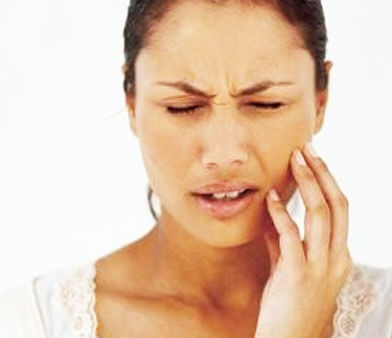
Let’s Take a Close Look at Jaw Pain
Understanding the make-up (anatomy) of the jaw joint / TMJ
The jaw is made up of the jaw bone or mandible and the temporal bones of the skull. The anatomical term for the jaw joint is the temporomandibular joint or TMJ. You would have a left and right TMJ. Since the temporal bones are part of the skull, the position of the head and neck has an impact on normal jaw function. The jaw joint (TMJ) is surrounded by a capsule or envelope. Separating the mandible bone from the temporal bones in each joint is a disc. This serves to cushion the bones and prevent wear and tear of the bone surfaces. Keeping the disc and joint in a stable position are a series of ligaments. The jaw functions by virtue of many muscles as they open close and move the jaw in the necessary movements required for normal function such as eating & speaking. As you can see from the above anatomy, there are many different structures making up the jaw joint which can become injured, strained and cause jaw pain or face pain.
Common factors causing Jaw Pain
- Conditions causing jaw pain are more prevalent in females than males.
- Traumatic injuries from an accident or sports injury such as boxing. This may lead to a fracture or dislocation of the jaw.
- Jaw pain created by clenching and grinding of the teeth. This is known as bruxing and creates tenderness in the muscles of the jaw and face. If severe, your dentist may prescribe a mouth plate / splint to protect your teeth from being worn down or cracking and chipping. Bruxism is often experienced as a result of emotional stress and is often at night. Bruxism can also cause face pain and headaches often experienced on waking in the morning.
- Pain and spasm in the jaw muscles following a dental procedure affecting your occlusion (your bite) such a filling that is too high.
- Holding the mouth open for long periods such as during lengthy dental procedures can cause spasm and pain in certain jaw muscles like the lateral pterygoid. The lateral pterygoid muscle attaches to the disc in the jaw joint and can pull the disc out of position (disc derangement). This is experienced as a painful click in the joint when the mouth is opened or closed and can cause a loss of range of mouth opening (called ‘closed lock’). Early manual manipulation of the jaw to relocate the disc by an experienced physiotherapist or dentist is essential.
- The capsule of the jaw joint can become inflamed causing a painful jaw condition called capsulitis.
- Arthritis of the jaw joint can cause stiffness and pain around the jaw and face.
Very specific physiotherapy treatment of jaw pain
Physiotherapists are experienced treating musculoskeletal problems. Jaw pain however is a condition that is not commonly treated by most physiotherapists as many of the jaw muscles need to be accessed via the mouth. At Melbourne TMJ and Facial Pain Centre™, our physiotherapists are experienced treating jaw pain with techniques both inside and outside the mouth. In addition they understand the complex link between the jaw and the head / neck and include this in the management of jaw pain conditions. Our physiotherapists work closely with dentists and dental specialists to co-ordinate our very specific physiotherapy treatment with other forms of treatment that jaw pain sufferers may require.
Don’t suffer any longer, Call 03 9824 8868 NOW to get a solution to your jaw pain.

 (03) 9824 8868
(03) 9824 8868